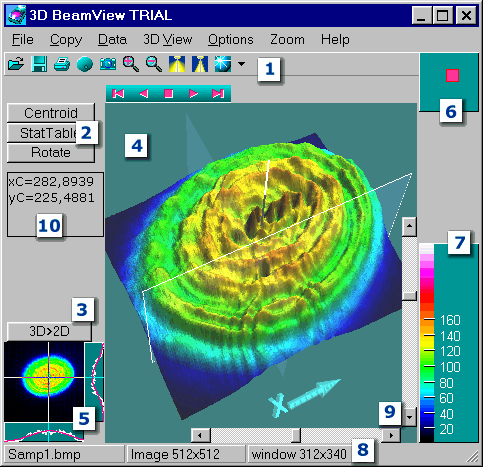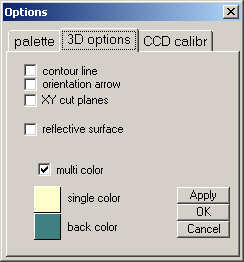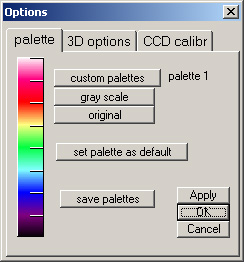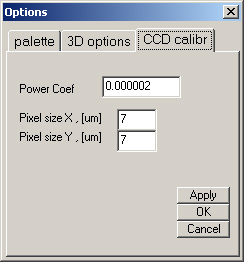
Overview
The 3D Beam View is an interactive program for advanced scientific visualization. The program is using OpenGL low level 3D graphics library for fast and effective rendering of surfaces. OpenGL is available from Silicon Graphics Inc. and included in Windows 98 and later. This library is also commonly known as virtual reality. The visualization is based on calculation of light reflecting from curved surface that has certain reflectivity, absorption, color, specular and diffused properties. 3D scene is constructed using prospective projection to give more realistic impact. OpenGL is considered to be fastest and most realistic visualization library.
Program has intuitive and easy to use graphical interface, just go around and click (using both left and right mouse). General approach, common in Microsoft programs, is preserved, so it is easy for people accustomed with Word, Excel, etc. Left mouse click selects objects or tools, Right mouse click shows sub-menus. For example, to rotate the surface press LEFT mouse down anywhere in 3D window and move it. This operation is known as Mouse Drag. We have provided tool tips for most of the buttons and tool-boxes.
The program has been tested with Windows 98/NT/2000/XP/Vista/Win 7. Also it will work with Windows 95 with OpenGL installed.
We recommend at least 1 GHz processor for 256x256 surface points.

In figure above:
1. Main button toolbar
::more
2. Init parameter calculation (parameters
and statistics table)
3. Exchange 3D and 2D subwindows
4. 3D window, drag-mouse operation
rotate the surface, click slicers for changing cut position
5. 2D window, click and drag mouse
changes target (cross) position ::more
6. Light position tool. Drag mouse
for changing light angle.
7. Palette
8. Clickable status bar. Change 3D
window size.
9. Scrolls. Change surface position
relative to 3D window
10. Centroid position in Pixels
Some more Options forms



3D
Laser Beam Profiler Help
Advanced 3D Graphics
-------------------------------------------------------------
Copyright © 2003-2013 ScienceGL, Inc.